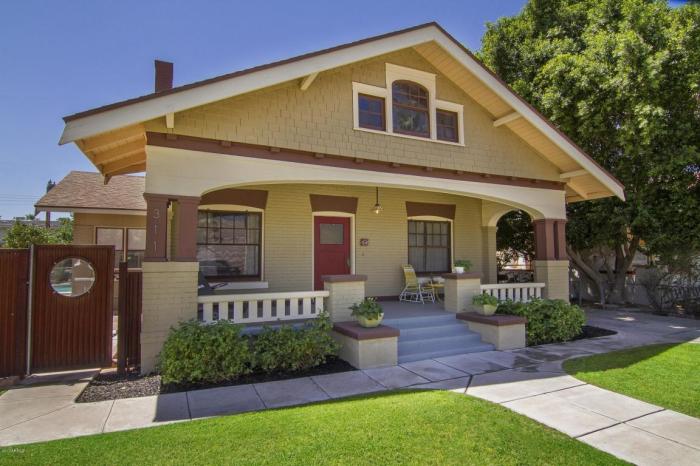
What are the best home insurance companies? Finding the right home insurance can feel like navigating a maze, especially with so many options and confusing jargon. But don’t worry, you’re not alone! This guide is your ultimate cheat sheet to finding the best home insurance for your needs, helping you avoid any major financial headaches in the event of a disaster.
We’ll break down the basics, compare top companies, and offer tips to ensure you’re fully protected. Get ready to level up your home insurance game!
Understanding Home Insurance Basics
Home insurance is like a safety net for your biggest investment: your home. It’s there to help you financially recover if something unexpected happens, like a fire, storm, or theft. But understanding the different types of coverage and how your premiums are calculated can be a little confusing. Let’s break it down, so you can feel confident about protecting your home and your finances.
Types of Home Insurance Coverage
Home insurance policies usually include several types of coverage, each designed to protect a specific aspect of your property and your financial well-being.
- Dwelling Coverage: This is the most basic type of coverage, and it protects the physical structure of your home, including the walls, roof, foundation, and attached structures like a garage or porch. This coverage pays for repairs or replacement in case of damage from covered perils like fire, windstorms, or hail.
- Personal Property Coverage: This part of your policy covers your belongings inside your home, such as furniture, appliances, clothing, and electronics. This coverage can help you replace or repair your belongings if they are damaged or stolen.
- Liability Coverage: This coverage protects you from financial losses if someone is injured on your property or if you accidentally damage someone else’s property. For example, if a guest trips and falls on your icy sidewalk, your liability coverage would help pay for their medical expenses and any legal costs.
- Additional Living Expenses (ALE): This coverage helps you pay for temporary housing and other expenses if you are forced to live elsewhere while your home is being repaired after a covered event. Imagine a fire damaging your kitchen; this coverage would help you pay for temporary housing, food, and other necessities while your kitchen is being rebuilt.
Factors Influencing Home Insurance Premiums
Several factors determine how much you’ll pay for your home insurance.
- Location: Homes in areas prone to natural disasters, like hurricanes, earthquakes, or wildfires, generally have higher premiums. The insurer assesses the risk of damage in your specific location and adjusts premiums accordingly.
- Property Value: The higher the value of your home, the more it will cost to insure. This makes sense because a more expensive home means a higher potential payout for the insurer if it’s damaged or destroyed.
- Coverage Amount: The amount of coverage you choose also affects your premium. More coverage typically means higher premiums, but it also means you’ll have more financial protection in case of a major loss.
- Deductible: Your deductible is the amount you agree to pay out of pocket before your insurance kicks in. A higher deductible generally means lower premiums, but you’ll have to pay more in case of a claim. You need to balance the cost of a higher deductible with your ability to cover a potential loss yourself.
- Home Safety Features: Having safety features like smoke detectors, burglar alarms, and fire sprinklers can reduce your premium. These features demonstrate to the insurer that you’re taking steps to minimize the risk of loss, making your home a safer bet for them.
Importance of Adequate Coverage
Having enough home insurance is crucial for protecting your financial well-being. Imagine a devastating fire or a powerful storm destroying your home. Without adequate coverage, you could be left with a massive financial burden, forcing you to rebuild your life from scratch.
Having adequate home insurance coverage can make a significant difference in your recovery process after a disaster.
Evaluating Top Home Insurance Companies

Choosing the right home insurance company is a crucial decision, as it can significantly impact your financial well-being in case of unexpected events. With numerous options available, it’s essential to compare and evaluate different companies based on key factors. This section explores the top home insurance companies, highlighting their strengths and weaknesses to help you make an informed decision.
Top Home Insurance Companies Comparison
To understand the competitive landscape, let’s compare some of the leading home insurance providers based on financial stability, customer satisfaction, coverage options, and pricing.
| Company | Financial Stability | Customer Satisfaction | Coverage Options | Pricing |
|---|---|---|---|---|
| State Farm | Strong (A+ rating from AM Best) | High (J.D. Power ranking) | Comprehensive, including specialized coverage for valuable items | Competitive, with discounts available |
| Liberty Mutual | Strong (A rating from AM Best) | Above average (J.D. Power ranking) | Wide range of coverage options, including identity theft protection | Competitive, with discounts for multiple policies |
| Allstate | Strong (A+ rating from AM Best) | Average (J.D. Power ranking) | Comprehensive coverage, including coverage for personal property | Competitive, with discounts for safe driving and home security |
| Farmers Insurance | Strong (A rating from AM Best) | Above average (J.D. Power ranking) | Customized coverage options, including coverage for water damage | Competitive, with discounts for bundling policies |
| USAA | Strong (A++ rating from AM Best) | High (J.D. Power ranking) | Comprehensive coverage, with specialized coverage for military members | Competitive, with discounts for military service |
Pros and Cons of Top Home Insurance Companies
Each insurance company has its unique strengths and weaknesses, which are essential to consider when making a decision.
State Farm
- Pros: Strong financial stability, high customer satisfaction, comprehensive coverage options, competitive pricing, and numerous discounts.
- Cons: May not be the cheapest option for all customers, limited availability in certain areas.
Liberty Mutual
- Pros: Strong financial stability, above-average customer satisfaction, wide range of coverage options, competitive pricing, and discounts for multiple policies.
- Cons: May have higher deductibles than other companies, limited availability in certain areas.
Allstate
- Pros: Strong financial stability, comprehensive coverage options, competitive pricing, and discounts for safe driving and home security.
- Cons: Average customer satisfaction, may not offer as many specialized coverage options as other companies.
Farmers Insurance
- Pros: Strong financial stability, above-average customer satisfaction, customized coverage options, competitive pricing, and discounts for bundling policies.
- Cons: May not be the best option for customers seeking the lowest premiums, limited availability in certain areas.
USAA
- Pros: Excellent financial stability, high customer satisfaction, comprehensive coverage options, competitive pricing, and discounts for military service.
- Cons: Only available to active military members, veterans, and their families.
Unique Features and Benefits
Some insurance companies offer unique features or benefits that might appeal to specific customers.
State Farm
State Farm offers a “Neighbor to Neighbor” program, which provides assistance to policyholders in case of emergencies, such as a power outage or a natural disaster.
Liberty Mutual
Liberty Mutual offers “RightTrack,” a program that rewards safe driving habits with discounts on car insurance.
Allstate
Allstate offers “Drive Safe & Save,” a program that tracks your driving habits and offers discounts based on your performance.
Farmers Insurance
Farmers Insurance offers “Farmers Insurance Exchange,” a program that provides discounts for bundling multiple policies, such as home, auto, and life insurance.
USAA
USAA offers a “Military Appreciation Program,” which provides special discounts and benefits to active military members, veterans, and their families.
Key Considerations for Choosing a Company
Choosing the right home insurance company can feel like navigating a maze, but fear not! We’re here to help you pick the perfect fit for your needs and budget. You’re not just looking for coverage; you’re looking for a reliable partner to protect your biggest investment.
Factors to Prioritize
It’s time to get serious about finding the best home insurance company. To help you prioritize your needs, we’ve Artikeld the key factors that matter most:
- Cost: This is a big one, right? You want to make sure you’re getting the best value for your money. Don’t just go for the cheapest option, though. Compare quotes from multiple companies and factor in coverage, customer service, and financial stability.
- Coverage: This is where you figure out what’s important to you. Do you need comprehensive coverage for your home and belongings, or are you looking for something more basic? Think about potential risks like natural disasters or theft and make sure your policy covers those.
- Customer Service: You’ll be dealing with your insurance company for years to come, so make sure they’re easy to work with. Look for companies with a reputation for excellent customer service, quick response times, and clear communication.
- Financial Stability: You want to make sure your insurance company can actually pay out if you need to file a claim. Check their financial ratings from agencies like AM Best or Moody’s.
Comparing Quotes, What are the best home insurance companies
Now that you’ve got your priorities straight, it’s time to get those quotes! Here’s how to do it like a pro:
- Get Quotes from Multiple Companies: Don’t settle for the first quote you see. Shop around and get quotes from at least three to five different companies.
- Compare Coverage: Don’t just compare prices; make sure you’re comparing apples to apples. Look at the coverage details, deductibles, and limits for each quote.
- Consider Discounts: Many companies offer discounts for things like security systems, fire alarms, or being a good driver. Ask about any available discounts.
- Read the Fine Print: Don’t just skim the quote. Read the policy details carefully, especially the exclusions and limitations.
Checklist for Potential Homeowners
Here’s a handy checklist to help you stay organized during your insurance search:
- Gather Your Information: You’ll need your home’s address, square footage, year built, and details about your belongings.
- Contact Multiple Insurance Companies: Get quotes from at least three to five different companies.
- Compare Quotes Side-by-Side: Use a spreadsheet or comparison tool to make it easy to see the differences in coverage and pricing.
- Check Financial Ratings: Look up the financial stability of each company using resources like AM Best or Moody’s.
- Read Policy Details: Carefully review the policy documents, paying attention to exclusions and limitations.
- Ask Questions: Don’t be afraid to ask questions about anything you don’t understand.
Understanding Policy Details: What Are The Best Home Insurance Companies

Your home insurance policy is like a contract between you and your insurance company. It Artikels the terms of your coverage, including what is covered, what is excluded, and how much you will be paid for covered losses. Understanding the details of your policy is crucial to ensure you are adequately protected and know what to expect in case of a claim.
Reading Your Policy
Before you sign on the dotted line, take some time to read your policy carefully. Pay attention to the following key sections:
- Declarations Page: This page contains your policy details, including your name, address, policy number, coverage amounts, and premium. It’s also where you’ll find the effective date of your policy.
- Coverage Section: This section Artikels the specific types of coverage you have, such as dwelling coverage, personal property coverage, liability coverage, and additional living expenses coverage. It also details the limits of coverage for each type.
- Exclusions and Limitations: This section Artikels what is not covered by your policy. This can include things like earthquakes, floods, or intentional acts. It’s essential to understand these exclusions so you can take steps to protect yourself from uncovered risks.
- Conditions: This section Artikels your responsibilities as a policyholder. It may include things like your duty to notify your insurance company of a claim, your obligation to cooperate with the investigation, and your responsibility to take steps to mitigate losses.
Filing a Claim
If you need to file a claim, here’s what you can expect:
- Contact Your Insurance Company: Immediately contact your insurance company to report the claim. They will guide you through the process and provide you with a claim number.
- Provide Documentation: Be prepared to provide your insurance company with detailed documentation about the claim, such as police reports, repair estimates, and receipts.
- Inspection and Investigation: Your insurance company may send an adjuster to inspect the damage and investigate the claim.
- Claim Settlement: Once the investigation is complete, your insurance company will make a decision on the claim. If the claim is approved, you will receive payment for the covered losses.
Keeping Accurate Records
Maintaining accurate records of your belongings is essential for filing a claim. This includes:
- Inventory: Keep a detailed inventory of your belongings, including descriptions, purchase dates, and receipts. You can use a spreadsheet, a home inventory app, or even a simple notebook.
- Photographs and Videos: Take photos and videos of your belongings, especially valuable items. This can help you prove the value of your belongings if they are damaged or stolen.
- Regularly Update Your Policy: It’s important to update your policy as your life changes. If you purchase new belongings, make significant renovations, or experience a change in your financial situation, you may need to adjust your coverage amounts or limits.
Additional Tips for Homeowners
You’ve gone through the process of choosing a home insurance company and understanding the ins and outs of your policy. Now, let’s talk about some practical tips to keep your home safe and your insurance premiums low.
Protecting Your Home From Potential Risks
Taking steps to protect your home from potential risks can make a big difference in preventing claims and keeping your insurance premiums manageable.
- Fire Safety: Fire is a leading cause of home insurance claims. Install smoke detectors on every level of your home and test them monthly. Replace batteries at least once a year. Have a fire escape plan in place and practice it regularly with your family.
- Storm Preparedness: Living in a region prone to hurricanes, tornadoes, or severe weather? Take steps to secure your home. Trim trees near your house, reinforce your roof, and have a plan for where to go during a storm.
- Security: Install a home security system, even if it’s a basic one. This can deter burglars and lower your insurance premiums. Make sure your home is well-lit, especially at night. Keep valuables in a safe place.
The Role of Home Maintenance
Regular home maintenance is like a superhero for your insurance premiums and your home’s overall health.
- Roof Maintenance: A well-maintained roof can prevent leaks and damage from storms, which can lead to costly insurance claims. Have your roof inspected regularly and make repairs promptly.
- Plumbing: Leaking pipes and water damage are common causes of insurance claims. Get regular plumbing inspections and address any issues immediately.
- Electrical System: Outdated electrical wiring can increase the risk of fires. Have your electrical system inspected and upgraded if necessary.
Resources for Homeowners
There are many resources available to help homeowners learn more about insurance and home safety.
- Insurance Companies: Most insurance companies offer educational resources on their websites, including tips on home safety and how to reduce your risk.
- Government Agencies: The Federal Emergency Management Agency (FEMA) offers resources on disaster preparedness and home safety.
- Consumer Protection Organizations: Organizations like the National Association of Insurance Commissioners (NAIC) provide information about insurance policies and consumer rights.
Conclusion

Finding the best home insurance is about more than just the lowest price. It’s about finding a company that’s got your back when you need it most. By understanding your coverage needs, comparing options, and being proactive, you can ensure your home is protected and your peace of mind is secure. So, go ahead, get those quotes, and choose a company that’s as reliable as your home itself!
Commonly Asked Questions
What is the difference between actual cash value and replacement cost coverage?
Actual cash value (ACV) coverage pays for the depreciated value of your belongings, while replacement cost coverage pays for the full cost of replacing them with new items.
How often should I review my home insurance policy?
It’s a good idea to review your policy at least annually, especially after any major life changes, like buying new furniture or renovations.
What is a deductible?
A deductible is the amount you pay out of pocket before your insurance kicks in. A higher deductible usually means a lower premium.
